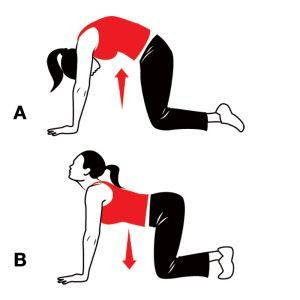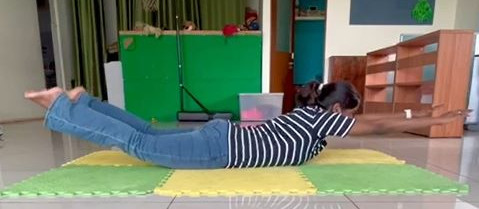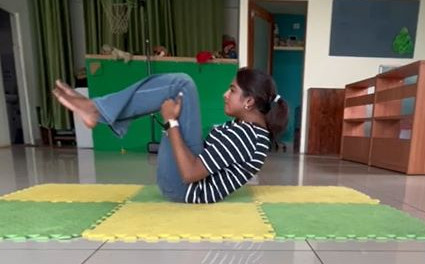Retained primitive reflexes are a condition that affects many children yet often goes undiagnosed. These reflexes are automatic movements present at birth and essential for survival and development in infancy. However, they are supposed to be integrated and replaced by more advanced motor skills as a child grows. In some cases, these reflexes persist and can interfere with developing higher-level motor skills, leading to delays, difficulties, and even disabilities.
The Impact of Retained Primitive Reflexes on Motor Development
In some cases, these primitive reflexes persist and can interfere with developing higher-level motor skills. This can lead to delays, difficulties, and even disabilities in areas such as:

Diagnosing Retained Primitive Reflexes
Diagnosing retained primitive reflexes requires a comprehensive evaluation by a pediatrician or other qualified healthcare professional. This evaluation may include a physical examination, developmental assessment, and neurological testing.
Exercises that help integrate primitive reflexes
- Start in the prone position with your head turned to the right.
- Move the right leg and hand into an “L” position.
- While in the “L” position, turn the head to the opposite side.
- Return to the starting neutral position.
- Repeat the “L” position and head turn on the left side, then return to midline.
The goal of the exercise is to break up the automatic integration of the reflex and improve control over the motion of the head and arm.

Another way to integrate is the Monkey run exercise!
 For this:
For this:
- Child stands up with arms straight out and palms down.
- Child turns head to one side.
- Child runs in place, bringing knees up high for a count of 10.
- Without stopping, child turns head to the other side and continues running in place for another count of 10.
- Repeat on both sides for a total of three times on each side.
- The exercise is designed to address ATNR retention by improving control over head and body movements.
2. STNR:
- The exercise is performed in the same position and motions as testing. The kid has to be on quadruped kneeling position and lift his head up and down along with hump contraction of trunk. Have the child repeat the positions for 10-15 times.
- Suggested to do 10-15 repetitions, 1x per day

3. Moro reflex:
- Have the child sit on a chair or lay down on their back.
- Instruct the child to open their arms and legs up wide, like a starfish.
- Encourage the child to do this slowly and purposefully to help them maintain control.
- Once the child is in the starfish position, instruct them to slowly bring their arms and legs together.
- Then, ask the child to cross their right arm and right leg over their left arm and left leg.
- Encourage the child to hold this position for a few seconds before slowly returning to the starfish position.
- Repeat the exercise, but this time have the child cross their left arm and left leg over their right arm and right leg.
- You can demonstrate the exercise for the child or show them pictures to help them understand the movement.
- Remember to encourage the child to take their time and move slowly to help them maintain control and improve their coordination.

4. TLR:
Exercise #1:

- In prone, have the child extend their legs and put their arms up in front of them. Instruct them to lift arms and legs off the ground and hold for 15 seconds.
- Suggested to do: 15-second holds, 10 repetitions, 1x per day
It is important to note that they may not be able to assume this position when you first start working with them. They may have difficulty with these exercises because of the retained reflex or any other diagnosis or delays. They may only be able to hold this position for a few seconds, or you may have to provide hand-over-hand assistance when you first start working on it. They may even need support to get into this position if they do not know how to move their body in that pattern. With all of the exercises, do not be afraid to be hands-on and show them how to do it. Using videos, pictures, and demonstrations can be helpful. Mirrors can also be helpful, especially with older children.
Exercise #2:

- In supine, have the child slowly pull knees to check with arms wrapped around legs (elbows pointed out) and tuck chin to chest with eyes closed, hold then slowly lower back to flat on the ground. Progress to holding for 15 seconds.
- Suggested to do: 15-second holds, 10 repetitions, 1x per day
5. Rooting reflex

- For the rooting reflex exercise, we need to use an eraser or fingers to stroke the cheek of the kid. We can start with a horizontal stroke from the ear towards the mouth.
- Give three strokes as a part of the rest of the exercises, and then ask the kid to resist the movement in the direction opposite to the stroke.
- Next, we can give vertical strokes from the right under the eye towards the lips. Give three strokes as part of the exercise and ask the kids to smile and resist the stroke actively over verbal command.
- Remember to encourage the child to take their time and start resisting the strokes slowly. This is essentially the same thing we did for testing, but you will do it purposefully as part of the exercise. This provides input to integrate and decrease that automatic response. You do that on both sides of the face.
6. Babinski reflex

- We can start the exercise for the retained Babinski reflex with few easily available objects.
- Place a mat and a few objects of different shapes and even tissue papers over it. Ask the kid to grasp the objects with the toes and put them into a basket.
- One more exercise to integrate a retained babinski exercise is walking over mat with the soles facing each other. The kid needs to walk 10 steps once a day.
- It increases the sense of grounding, balance and stability.
7. Palmar grasp:
- Use a resistance ball, Play-Doh, or resistive putty as a tool for this exercise.
- Choose a material with an appropriate level of resistance based on the individual’s sensory needs.
- Instruct the individual to perform a grasp pattern, beginning with a full fist and then pinching with their index, middle, ring, and pinky fingers.
- Have them repeat this pattern in the opposite direction for a total of 10 movements.
- Repeat the exercise for 10 repetitions.
- The goal of the exercise is to provide input to the hand and fingers and dissociate the movement of the fingers from the stimulation on the palm.
- By doing so, the exercise aims to break the connections between the fingers’ movement that are currently paired.

8. Spinal Galant

- Choose a space that is clear of any obstacles and has enough room for the child to move their arms and legs freely.
- Have the child lie down on their back on the floor.
- Instruct the child to spread their arms and legs out to the sides, creating a T-shape with their body.
- Move their arms and legs up and down: Encourage the child to move their arms and legs up and down in a controlled manner, as if making a snow angel in the snow.
- Provide support as needed: Depending on the child’s age and ability, you may need to provide support or guidance to help them with the movement pattern.
- Increase difficulty as needed: As the child becomes more comfortable with the movement pattern, you can increase the difficulty by adding resistance, such as holding a small weight in their hands or wearing ankle weights on their legs.
- Remember to make the activity fun and engaging for the child, and to provide positive feedback and encouragement throughout the exercise.
Conclusion
Retained primitive reflexes are a common condition that can impact a child’s motor development and overall well-being. However, with proper diagnosis and treatment, children can develop the advanced motor skills they need to thrive and reach their full potential. If you suspect that your child may have retained primitive reflexes, speak with a qualified healthcare professional to explore your options for assessment and treatment.
References:
- https://www.playstreet.in/2023/03/23/retained-primitive-reflexes/
- https://www.completeeyecare.net/featured-articles/primitive-reflexes-an-unbalanced-neurological-system/
- https://www.growinginmotion.org/reflex-integration
- https://www.occupationaltherapy.com/articles/understanding-primitive-reflexes-they-impact-5409-5409



0 Comments